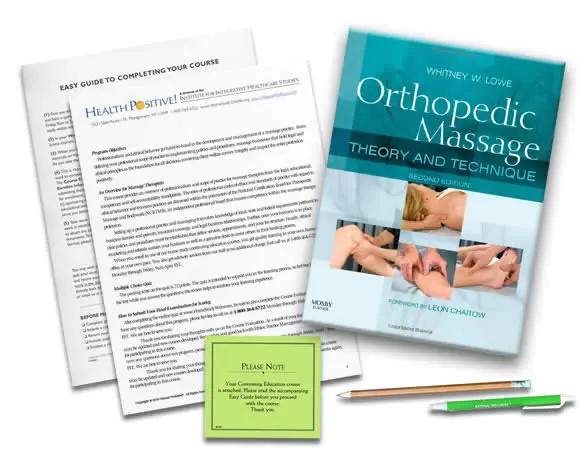
Orthopedic soft-tissue problems are common among the general population, whether from sports, occupational activities, or chronic pain. Learn important evidence-based approaches to safe, effective and cost-effective orthopedic massage through this continuing education program, written for those interested in understanding and applying massage as an intervention for soft-tissue disorders.
Recent research into the physiological effects of massage has strengthened the justification for its use in the treatment of soft-tissue pain and injury conditions. The course text presents a comprehensive and in-depth look at the physiological nature of these conditions and the massage treatments most effective for their relief. Providing validation for the role of massage in treating orthopedic conditions, the text also aims to help the therapist understand the relationship between the soft tissues to which techniques are applied and the overall orthopedic disorder affecting their clients.
In this course, you will learn:
Case studies are included to demonstrate techniques and management in clinical practice. Step-by-step photographs of the techniques are depicted in full detail throughout.
Amanda Rodriguez, LMT
10/4/2025
George Odishoo, LMT
9/28/2025
Tiffany Ferguson, LMBT
9/27/2025
akwedmiel Mnahsheh, LMT
9/22/2025
Wayne Whitford
8/22/2025
The test was as clear as mud. Several questions had two correct answers. I've been a practicing massage for 30 years and this is the first time that I've been unhappy with the course's test.

Sharon Burch holds a Masters Degree in Nursing and has been practicing as a nurse since 1974. She is currently a Registered Nurse in the state of Arkansas. Additionally, Ms. Burch studied under many of today's leaders in massage therapy and bodywork during the 1980s, became Nationally Certified through the NCBTMB in 1993 and holds a professional membership with the AMTA.
As founder of Health Positive!, Ms. Burch has created over 60 home study nursing and massage continuing education programs, performed over 65 public, live educational presentations, has written two published books, served as a member on the NCBTMB Continuing Education committee and was a founding member of the National Association of Nurse Massage Therapists.
Sharon is an instructor on many of the Institute's programs and has authored and co-authored various ethics courses and additional titles such as Touch for the Seriously Ill, Stress Reduction Through Bodywork, Staying Well – Naturally, Cardiopulmonary Health and Illness, Chronic Pain Management, Marketing Massage in Four Easy Steps, Preventing Medical Errors, HIV Update for Massage Therapists and Bodyworkers, Understanding HIV, Massage for Edema and more.


Take our free online course: Ethics Refresher
We will not rent/sell your email to anyone.
You'll also receive our newsletter and special offers.
Thank you! An email will be sent to the address provided with instructions on how to enroll in this 1 CE hour course - FREE!
If you do not see our email within a few minutes of signing up, please check your Spam/Junk folders it may have been delivered there instead of your inbox.
If, by chance, you still have not received it within 5 minutes, please call us at 1-800-364-5722, Monday-Friday, between 9am-12:30pm and 1:30pm-5pm EST for assistance.